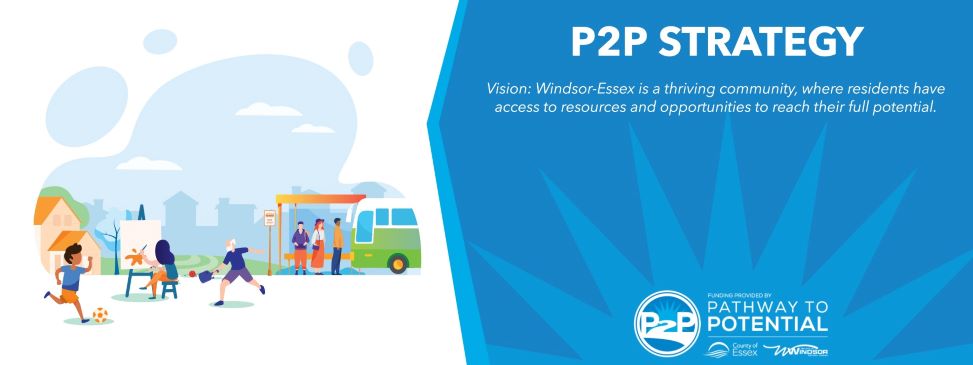P2P Strategy
Established in 2008, Pathway to Potential (P2P) is a poverty-reduction strategy for the Windsor-Essex region. Programs and initiatives funded through P2P aim to increase opportunities for the most vulnerable within Windsor-Essex so that they can reach their full potential and participate meaningfully in society.
In Spring 2024, a renewed P2P strategy was unanimously adopted by the City of Windsor and County of Essex councils. The strategy was developed through a region-wide consultation process. Input from over 300 community voices within Windsor-Essex was received and helped shape the strategy's priorities.
The P2P strategy is a holistic approach to addressing the unique and complex challenges that individuals and communities living in poverty face. The plan focuses on three goals:
- Strengthening Priority Neighbourhoods
- Advancing Regional Affordable Programs
- Measuring Regional Impact
The goals are supported by 10 initiatives, 29 action items and 26 deliverables to be accomplished between 2024 and 2028.
To review the full strategy, please download the plan: Pathway to Potential: Windsor-Essex County Poverty Reduction Strategy 2024-2028
For further details on the development and progress of the P2P strategy, please click on the following links:
Definition of Poverty
Pathway to Potential (P2P) has adopted the Government of Canada’s definition of poverty:
- “The condition of a person who is deprived of the resources, means, choices and power necessary to acquire and maintain a basic level of living standards and to facilitate integration and participation in society”
Learn more about Canada's First Official Poverty Reduction Strategy on the Government of Canada website.
Market Basket Measure (MBM)
P2P has also adopted Canada's official measure of poverty, the Market Basket Measure (MBM), to determine eligibility for subsidy programs. The MBM is based on the cost of a specific basket of goods and services representing a modest, basic standard of living. It includes the costs of food, clothing, footwear, transportation, shelter and other expenses for a reference family. These costs are compared to the disposable income of families to determine whether they fall below the poverty line.
For more information, please visit Market Basket Measure (Statistics Canada) or the Dimensions of Poverty Hub.

